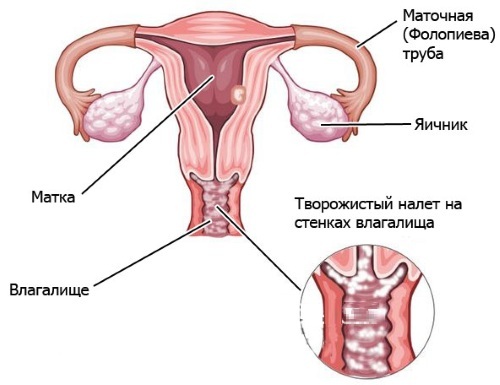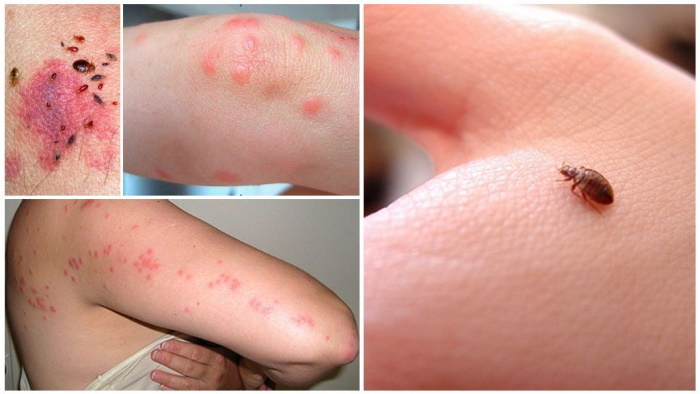Content
- Colour
- Brown
- Yellowish
- Red
- White
- Grayish
- Green
- Smell
- There is a smell
- No smell
- Consistency
- Liquid
- Curd
- Foamy
- Quantity
- Small
- Moderate
- Abundant
- Itching
- There is
- No
- Video about discharge in women
During menopause, all women have vaginal dischargewhich are considered the norm. The color, smell and amount of such secretions determine the state of the reproductive system during the onset of menopause.
After the cessation of the functioning of the reproductive system in a woman's body, it changes significantly hormonal balance, inflammation, oncological diseases and chronic disorders are actively developing genitals. Any non-standard discharge becomes the first sign of the disease, which is important to diagnose quickly in order to start further treatment.
Colour
Discharge during menopause in women differs primarily in color. Normally, with the onset of menopause, a woman begins to release mucus from the cervical canal and uterus. A clear or sometimes whitish liquid can be discharged from the vagina in a different consistency. The mucus should not have an unpleasant odor or itchiness.
In more rare cases, a woman may have no vaginal discharge at all, so the appearance discharge of a different color indicates the presence of significant changes in the state of the uterus and ovaries.
Most often, mucous manifestations can have the following color:
- Brown;
- Red;
- yellow;
- green;
- grey.
Brown
Discharge during menopause in women may be accompanied by slight bleeding. Such discharge indicates the removal of particles of the old endometrium. After cleaning the surface of the uterus, the discharge should completely stop.
In case of dark red and brown discharge, an urgent need to consult a doctor. Most often, this type of discharge indicates the presence of endometriosis, uterine fibroids, or polyps in the genitals. Brown discharge is an alarming sign, especially with a prolonged absence of menstruation. In this case, the number of secretions may not always be large. Brownish discharge can be smearing.
Treat brown discharge in different ways. Treatment for fibroids and polyps consists in systematic observation and, if necessary, performing an operation to remove damaged tissue or uterus in whole or in part.
In endometriosis, hormone therapy is considered the main treatment. Preparations Janine, Logest, Regulon are drunk in courses, depending on the state of health and the effectiveness of the impact.
An active addition to the treatment of such secretions is calendula. Dry calendula flowers are crushed and infused in hot water. Decoctions are used for drinking and douching.
Yellowish
Discharge during menopause in women of a yellowish color without an unpleasant odor and a transparent consistency can be considered normal. The manifestation of a yellow tint may be associated with the peculiarities of the production of mucus by the body. In some cases, yellowish discharge can be triggered by urinary incontinence with weakening of the pelvic muscles. In this case, a small amount of urine may flow and mix with the discharge from the uterus.
To restore the condition of the muscles, a woman needs to strengthen them through Kegel gymnastics.
Red
Bloody discharge from a woman's genitals is considered normal immediately after menopause. During the period of completion of reproductive processes in the body, the amount of hormones produced changes. The tissues of the vagina and canals dry up and begin to renew. The superficial layer of the uterus gradually changes and becomes cleansed. Until the endometrium is completely withdrawn, minor spotting is the norm.
If the bloody discharge is profuse (a woman changes up to 10 pads in 1 day), then in order to prevent large blood loss, it is important to immediately start treatment. In most cases, a woman's body can experience a violation of the blood clotting process, stagnation of secretions and extensive damage to the surface of the uterus.
In this case, the woman is cleansed in the hospital under anesthesia and hemostatic therapy (tranexam) is prescribed. It is important to reduce physical activity on the female body and eliminate stressful situations. To restore the state of the uterus, a decoction of nettle is used. It helps to restore the reproductive system and the cessation of vaginal discharge.
Constant spotting can be signs of fibroids, in which the muscle tissue of the uterus grows. Fibroids can be malignant and affect all genitals. With a sharp progression of the disease, inflammatory processes begin in the uterus, which are accompanied by an increase in body temperature and require urgent surgery.
White
If the vaginal discharge is bright white and has an unpleasant odor, and the concentration of the discharge is thick and cheesy, then most often the cause of this is the appearance of thrush (candidiasis). White discharge comes out in flakes with a sour odor and is accompanied by itching in the genitals. The surface of the external genitalia may swell and swell.
For the treatment of thrush during menopause, antifungal drugs are prescribed. Fluconazole, flucostat are drunk by mouth once, and if necessary, repeat the reception. And suppositories (pimafucin, zolain) are inserted into the vagina every day until complete recovery.
Persistent white discharge with bloody impurities even after treatment can be a manifestation of erosion (destruction of the surface layers) of the cervix and dysplasia. Erosion of the cervix is removed by laser cauterization, and dysplasia is removed with surgery.
Grayish
White discharge from the uterus with a gray tint is not always a sign of a disorder. If the grayish discharge does not have an unpleasant odor, then the gray color may be an indicator of vitamin imbalance, dehydration, or taking various medications.
But if the gray discharge has an unpleasant odor, then an analysis should be made immediately for the presence of sexually transmitted diseases. Gonorrhea is often accompanied by a damp-greenish discharge. In the external genitals, severe itching and burning appear, and the woman constantly has the urge to urinate.
Green
During menopause, a woman may have green vaginal discharge. Any green discharge is an indicator of a purulent process in the genitals. In most cases, such discharge is accompanied by an unpleasant odor.
Green highlights are typical for:
- trichomoniasis, in which greenish-yellow mucus clots come out of the body. The discharge may be foamy and watery;
- gonorrhea, which is associated with a grayish-green discharge. Pain, burning sensation may appear in the genitals. A woman's urination process is disturbed.
Treatment of sexually transmitted infections is carried out with antibiotics of certain groups (ceftriaxone, azithromycin), as well as antiseptic and antifungal drugs (tinidazole, flagin, ornidazole).
Smell
An additional indicator of a health disorder during menopause in a woman is the presence of an odor in the discharge. Discharge of any color is not an indicator of a serious violation in the absence of an unpleasant odor.  Sour smell, the smell of putrefaction often accompanies the development of infectious, purulent and fungal processes. When examined by a venereologist, the doctor necessarily assesses the condition of the genitals, secretions and their smell.
Sour smell, the smell of putrefaction often accompanies the development of infectious, purulent and fungal processes. When examined by a venereologist, the doctor necessarily assesses the condition of the genitals, secretions and their smell.
There is a smell
Discharge from the uterus during menopause in women is often accompanied by an unpleasant odor. This may be due to an imbalance of hormones in the body, a decrease in their level. Foul odor often accompanies hot flashes during menopause, which is also considered normal.
An unpleasant smell is characteristic of a number of diseases, which include:
- candidiasis;
- infectious diseases;
- oncological diseases.
Antifungal drugs are used to treat candidiasis, and antiseptic drugs and antibiotics are additionally used for infectious diseases. Oncological diseases during menopause are in most cases malignant and require removal.
No smell
Vaginal discharge during menopause should normally be odorless. Transparent mucous discharge only remains on panty liners, the merit of which may be associated with increased hygiene at this time. During menopause, a woman, in order to avoid possible problems, should keep herself clean, systematically wash and change underwear. Otherwise, a woman may develop various diseases of the genital organs.
Consistency
The consistency of vaginal discharge is important for the diagnosis of disease and health status. Discharge normally can have a different consistency from thick mucus to a clear liquid with a yellowish tinge.
Liquid
Liquid discharge during menopause occurs most often. If at the same time the woman does not experience itching and pain, and the discharge is odorless and colorless, then the watery manifestations may be associated with the individual characteristics of the body. In this case, a small amount of liquid secretion can be associated with the consumption of large amounts of water and liquid food, as well as with the period of the year.
If the liquid mucus has an unpleasant odor, this is a manifestation of infectious diseases of the genital area, which require drug treatment.
Curd
Cheesy discharge in the form of flakes or a thick white mass is the result of the development of a fungal infection in the uterus. Candidiasis or thrush develops gradually for various reasons and is expressed in the appearance of abundant white discharge, oud and burning sensation in the genitals.

If untreated, candidiasis can transform into inflammatory diseases. For the treatment of candidiasis, antifungal drugs of local and oral action are used.
Foamy
Foamy discharge is associated with the development of purulent processes in the uterus and always accompanies infectious diseases. If foam appears in the discharge during menopause, it is important to see a doctor right away in order to get smears and start immediate treatment.
Quantity
The amount of discharge during menopause is different and depends on the individual characteristics of the woman's body. This is influenced by the state of the body, excess weight, the presence of operations. The amount of discharge may be related to the season, dietary habits and mobility of the woman.
Small
A small transparent discharge is the norm for a woman during menopause. In the absence of chronic diseases of the genital area and the normal course of menopause, all processes in a woman's body occur gradually. In this regard, mucus comes out in a meager amount, which is not an indicator of a violation. In rare cases, there may be no discharge at all.
Moderate
A moderate amount of mucus every day is considered standard after the onset of menopausal changes. After the restructuring of the body, the outer layer of the surface of the uterus changes, and the amount of hormones produced also changes. All changes in the body affect the state of the uterus and provoke systematic mucous discharge from the body. In the absence of green, white or yellowish color, as well as an unpleasant odor, there is no reason for alarm.
Abundant
A large amount of discharge always causes discomfort for a woman. but in the absence of bloody clots, an unpleasant odor, abundant discharge is not an indicator of a violation. Often during menopause, vaginal discharge can mix with urine, which leaks from the bladder due to weakening of the pelvic muscles, and increase the volume of mucus.
Only when color and odor appear in abundant mucous secretions, you should consult a doctor for examination and treatment.
Itching
Itching in the genitals is caused by inflammatory and allergic reactions to the processes that take place in the body. This may be due to inadequate personal hygiene products or poor genital hygiene. In this case, allergic itching disappears within a few days.
There is
In the presence of itching, which manifests itself constantly for a long time and gradually increases, it is important to consult a doctor for an examination.
The main causes of itching in the genitals can be:
- sexually transmitted and non-sexually transmitted infectious diseases;
- a fungal infection that can develop due to stress and a drop in immunity during menopause.
To quickly eliminate discomfort, it is important to immediately begin treatment with topical antifungal drugs.
No
During menopause, the absence of itching in the wife in the presence of discharge is the norm. During this period, mucous discharge should not disturb the surface of the genitals. Subject to the rules of personal hygiene and constant monitoring of the state of health, discharge during menopause should not cause discomfort and anxiety, which is an indicator of health and the normal development of natural processes in the body.
Video about discharge in women
Female discharge:



